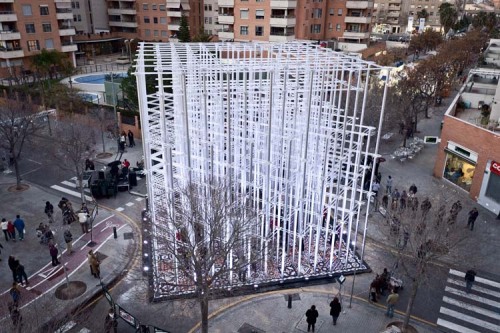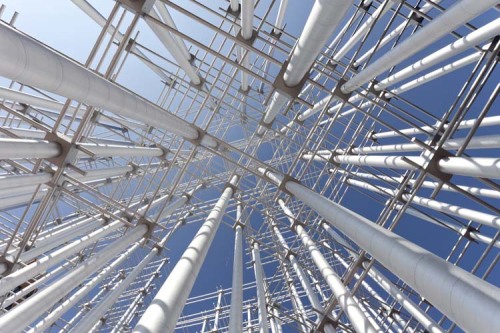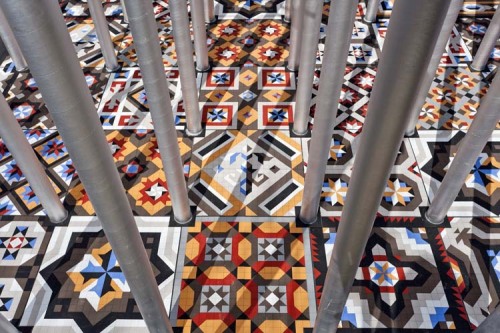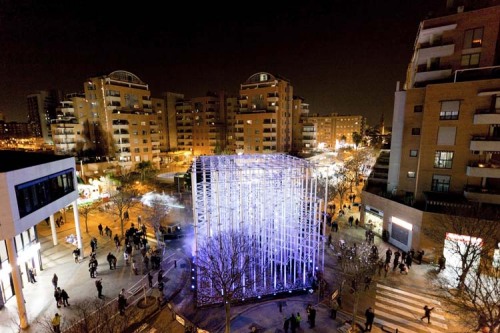
This cubic pavilion was constructed in the heart of downtown Valencia for the Valencia Fallas Festival last
March. With its crisp, straight geometric lines and lustrous silver
finish, it looks like it’s made of a metal such as aluminum, but it wasn't. It was constructed from top to bottom out of cardboard.
The structure, which was named the Ekklesia pavilion after the principal assembly of Athenian democracy in ancient Greece, was built by the art collective Pink Intruder. The lattice-like installation was designed to represent a temple "where citizens can meet and realise the power they have to change things through debate and confrontation of ideas." It was built from eight horizontal layers of metallic cardboard tubes, supported by a seven-by-seven grid of vertical columns. It sat atop a 96,000 elaborately painted tile mosaics, which echoed the geometry of the larger structure. The mosaic was based on designs of Nolla Mosaic, using only squares and triangles and seven different colors. Nolla’s ceramic was a traditional Valencian ceramic that was lost in the middle of 20th century. You can see a time-lapse of the construction process in the video below, along with how the final structure looks at night, when it’s illuminated with a cascade of blinking.
The structure, which was named the Ekklesia pavilion after the principal assembly of Athenian democracy in ancient Greece, was built by the art collective Pink Intruder. The lattice-like installation was designed to represent a temple "where citizens can meet and realise the power they have to change things through debate and confrontation of ideas." It was built from eight horizontal layers of metallic cardboard tubes, supported by a seven-by-seven grid of vertical columns. It sat atop a 96,000 elaborately painted tile mosaics, which echoed the geometry of the larger structure. The mosaic was based on designs of Nolla Mosaic, using only squares and triangles and seven different colors. Nolla’s ceramic was a traditional Valencian ceramic that was lost in the middle of 20th century. You can see a time-lapse of the construction process in the video below, along with how the final structure looks at night, when it’s illuminated with a cascade of blinking.
Of course, that's not the whole story. You see, traditional "falla" structures are built and then burned during the festival to celebrate the arrival of spring. This installation took place only fifty days before the municipal elections in Spain. Each of the installation’s columns were screen printed with real political messages from actual citizens to highlight the emptiness of
political discourse.




Video that describes the construction process of "Ekklesia" urban intervention, held in Valencia during March 2015. A Pavilion build in cardboard pipes. A place to interact and discuss
No comments:
Post a Comment